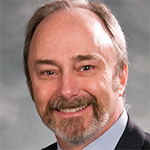Every emergency physician reading this has a frequent flier, the colloquial term for recidivist health care consumers. These patients—more formally referred to as superutilizers—use a wildly disproportionate amount of resources.
Explore This Issue
ACEP15 Preview: Vol 34 – No 09a – September 2015
Dr. Anderson
In fact, Rand Corporation’s 2013 report “The Evolving Role of Emergency Departments in the United States” found that just 2 percent of the physician workforce accounts for 4 percent of the dollars spent on health care while supplying 28 percent of all unscheduled care and more than 60 percent of all unscheduled care that occurs between 5 p.m. and 9 a.m.
A trio of emergency physicians will try to help stem that tide with this year’s Colin C. Rorrie Jr. Lecture, set for 10 a.m. on Wednesday, Oct. 28 at ACEP15 in Boston.

Dr. Kessler
“Point one is to understand what a superutilizer is,” said one of the speakers, Stephen Anderson, MD, FACEP, an emergency physician in Seattle and a member of ACEP’s Board of Directors. “Second is to recognize that instead of blocking that type of care, coordinating their case is a way that not only cuts down on costs, it also gives patients better health care outcomes. And third—because it’s really win, win, win—is it makes providers happier and more satisfied in the long run.”
The lecture, “Coordination of Care Through the ED: Influencing Costs, Recidivism, and Health Outcomes,” will also feature emergency physicians Chad S. Kessler, MD, MHPE, FACEP, deputy chief of staff at the Durham VA Medical Center in North Carolina, and Maria Raven, MD, MPH, FACEP, of the University of California, San Francisco.

Dr. Raven
Dr. Anderson said that the lecture is meant to kick-start the conversation of how EDs deal with superutilizers. That includes knowing patients who frequently use an individual institution and also those who bounce between different hospitals in a given geographic area. Health information exchanges would be a good way to do that, allowing physicians to quickly determine if a patient is frequently seeking or receiving care.
In particular, exchanges could help identify those with mental health or substance-abuse issues, who Dr. Anderson said make up the bulk of frequent utilizers.
“If you really want to make a difference in the revolving door … you’ve got to come up with programs that help those patients in your department and [help] when you discharge them,” he said.
Pages: 1 2 | Single Page





No Responses to “ACEP15 Rorrie Lecture to Address Emergency Department Superutilizers”